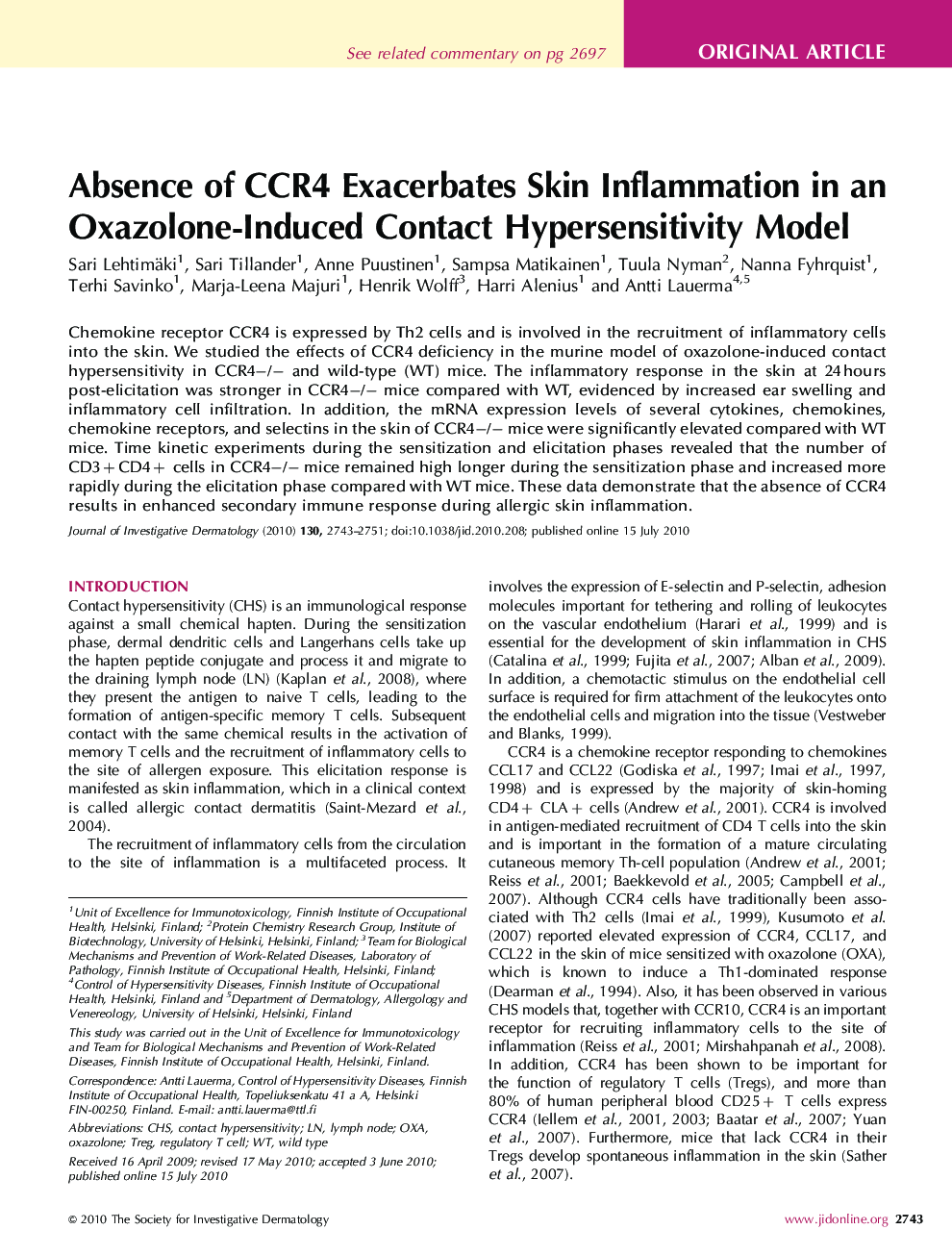| Article ID | Journal | Published Year | Pages | File Type |
|---|---|---|---|---|
| 3215810 | Journal of Investigative Dermatology | 2010 | 9 Pages |
Chemokine receptor CCR4 is expressed by Th2 cells and is involved in the recruitment of inflammatory cells into the skin. We studied the effects of CCR4 deficiency in the murine model of oxazolone-induced contact hypersensitivity in CCR4-/- and wild-type (WT) mice. The inflammatory response in the skin at 24 hours post-elicitation was stronger in CCR4-/- mice compared with WT, evidenced by increased ear swelling and inflammatory cell infiltration. In addition, the mRNA expression levels of several cytokines, chemokines, chemokine receptors, and selectins in the skin of CCR4-/- mice were significantly elevated compared with WT mice. Time kinetic experiments during the sensitization and elicitation phases revealed that the number of CD3+CD4+ cells in CCR4-/- mice remained high longer during the sensitization phase and increased more rapidly during the elicitation phase compared with WT mice. These data demonstrate that the absence of CCR4 results in enhanced secondary immune response during allergic skin inflammation.
